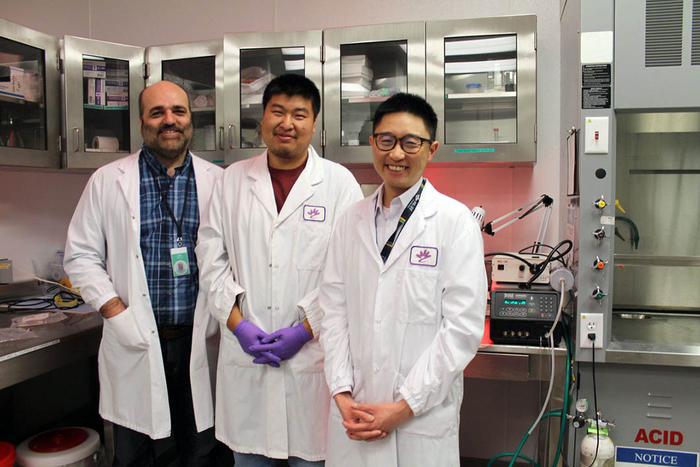SASKATOON – Researchers at the University of Saskatchewan (USask) are hopeful new understanding of cellular defects related to Cystic Fibrosis (CF) could help pave the way for treatment of the disease.

Credit: Canadian Light Source
SASKATOON – Researchers at the University of Saskatchewan (USask) are hopeful new understanding of cellular defects related to Cystic Fibrosis (CF) could help pave the way for treatment of the disease.
A team in the College of Medicine led by Drs. Juan Ianowski (PhD) and Julian Tam (MD) found that sodium transport is abnormal in lungs with CF. The researchers, affiliated with the Respiratory Research Centre, studied the swine model of CF and used a specialized microelectrode technique that allowed them to perform experiments with very high resolution. They discovered there is excessive sodium absorption in the small airways, a previously unstudied site in the body.
“A precise understanding of the cellular basis of CF lung disease is a prerequisite for the development of treatments such as gene therapy that have the potential to cure CF,” said Tam. “CFTR modulators, such as Trikafta, can improve life for about 90 per cent of patients. Our work is especially relevant to that 10 per cent of people with CF who cannot benefit from these medications.”
Their findings were published in the highly regarded journal Cell Reports on Oct. 5.
According to Cystic Fibrosis Canada, CF is the most common fatal genetic disease affecting Canadian children and young adults. There is presently no cure for the disorder that varies in symptoms from patient to patient, but mainly affects the lungs and digestive system. About one in every 3,600 children born in Canada has CF, which occurs when a person receives two copies of a defective gene — one from each parent.
Ianowski has been working with Tam for about six years, and has been able to meet people with CF in his clinic. He said this adds a sense of purpose and desire to create applicable outcomes through the research he performs in the lab.
“In this context I get to know the patients by name and see their struggles,” Ianowski said. “Working with Julian has created a meaningful partnership and we can inform and strengthen each other’s work.”
Tam and Ianowski point to the power of USask’s rich research environment, which gave them access to the expertise of veterinarians that supported their work. They also are grateful for the vital contributions of team members like post-doctorate fellow Dr. Xianojie Luan (PhD), who played a crucial role in developing the research protocols and collecting data.
The research was funded by the Canadian Institute for Health Research and Cystic Fibrosis Canada.
-30-
Journal
Cell Reports
DOI
10.1016/j.celrep.2021.109795
Method of Research
Experimental study
Subject of Research
Animal tissue samples
Article Title
cAMP triggers Na+ absorption by distal airway surface epithelium in cystic fibrosis swine
Article Publication Date
5-Oct-2021
COI Statement
The authors declare no competing interests.




